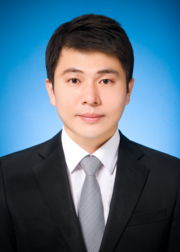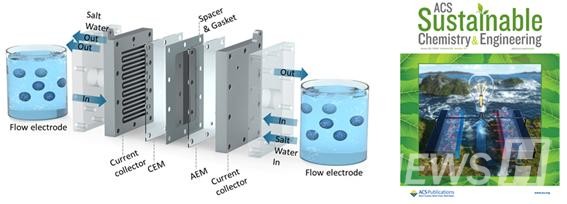Generating more than 20 percent of electricity by using expanded graphite
As carbon neutrality has become the major topic of global discussion, eco-friendly energy is also being spotlighted. Amidst this situation, Professor Song Tae-seup of Hanyang University Department of Energy Engineering developed the “Flow-electrode Capacitive Mixing mechanism (F-CapMix)” to increase energy production efficiency, according to Hanyang University on October 26. The salinity gradient power technology, which generates energy using the salinity difference of seawater and freshwater, is also evaluated as the next-generation new and renewable energy source.
The salinity gradient power technology includes △Reverse Electrodialysis (RED) that uses the movement of ions △Pressured Retarded Osmosis (PRO) that uses osmotic pressure △Capacitive Mixing (CapMix) that uses ion’s adsorption and desorption. RED and PRO methods were used previously, but as they cause environmental pollution, the CapMix method is mainly being researched.
The CapMix method is eco-friendly and requires a low cost for pretreatment or maintenance, but it also has difficulty in commercialization as the power density is not regular. To solve this problem, F-CapMix using carbon suspension as a flow electrode was developed.
F-CapMix uses porous carbon materials to adsorb Na+ positive ion and Cl- negative ion inside sea waters. Also, it uses activated carbons with a large surface area to increase the amount of generated electricity. However, if the surface area is large, the conductivity is low and the viscosity of flow electrodes increases, reducing electricity generation efficiency.
Professor Song’s team concluded that examination of carbon materials and flow electrodes is required to enhance the generation efficiency and studied diverse carbon materials.
By observing different kinds of carbon materials, they proved that the surface area of carbon materials is not the major factor in F-CapMix. Furthermore, they found that when the conductivity of carbon material is high, and solid-like behaviors within flow electrodes are shown, the adsorption amount of ions in the seawater increases, and the charge percolation of charged particles is facilitated.
They also discovered that when the expanded graphite with a surface area of more than 100 times smaller than that of activated carbon (about 0.4 W/m2) as a flow electrode material, constant power (about 0.5 W/m2) can be produced.
This study has significance in that it used expanded graphite as a carbon material other than activated carbon for the first time in Flow-electrode Capacitive Mixing to examine factors affecting power generation efficiency and analyze the causal relationship between electrode properties and power generation efficiency. Accordingly, it is evaluated that environmental and electrochemical engineers have presented the guidelines for flow electrode materials and main factors of flow electrode itself necessary for the commercialization of Flow-electrode Capacitive Mixing technology.
This research was supported by the Korea Electric Power Corporation’s basic research project (project number: R20XO02-2). The results were published in the academic journal ACS Sustainable Chemistry & Engineering (IF 8.198) by the American Chemical Association, September online edition, being selected as a cover image.


Click to see the paper

